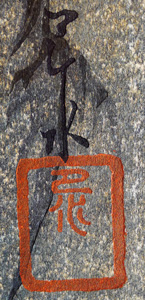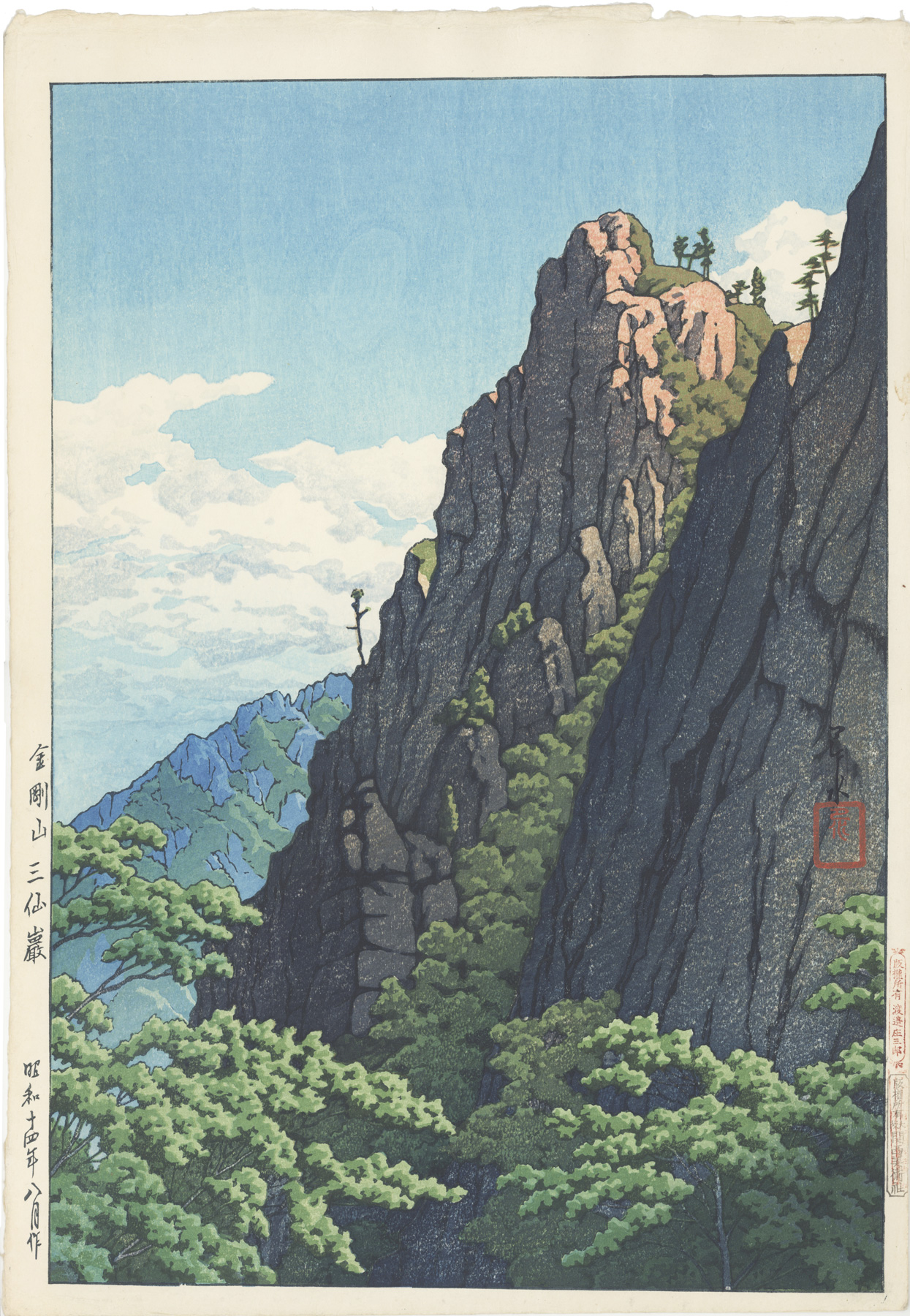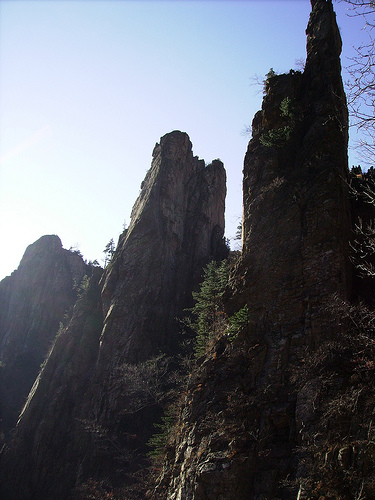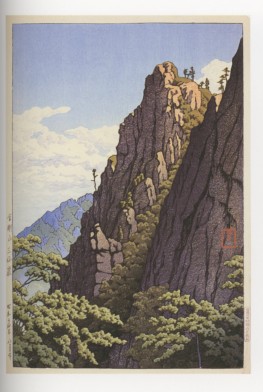About This Print
Catalogue Raisonné Entry
Source: Kawase Hasui; TheComplete Woodblock Prints, Kendall Brown, Amy Reigle Newland, Amsterdam, Hotei Publishing, KITPublishers, 2003, p. 113.Narazaki1 writes: ‘Hasui’s trip to Koreaserved to refresh the artist, whose art had been stagnating for sometime. …The scenery and customs that Hasui witnessed in Korea marked anartistic turning point. He illustrates the bizarre shape of theSamburam rock in the Diamond mountains (Kumgangsan, in present-dayDemocratic People’s Republic of Korea), showcasing its imposingcharacter. The lines of the rock are bold, the shape angular and thecolour vivid.’
1 Narazaki Muneshige, Hasui's biographer and compiler of the artist's first catalogue raisoneeé Kawase Hasui mokuhanga shu, Mainichi Shinbun, Tokyo, 1979.
About The Series Eight views of Korea
Source: Kawase Hasui; TheComplete Woodblock Prints, Kendall Brown, Amy Reigle Newland, Amsterdam, Hotei Publishing, KITPublishers, 2003, p. 113.Theseprints resulted from a trip Hasui made to Korea in 1939, together withthe artists Ikegami Shuho (1874-1944), Yazawa Genetsu (1886-1952),Nagata Shunsui (1889-1970) and Yamakawa Shuho (1898-1944). The printswere published by Kansai Bijutsusha [関西 美術社] in Osaka headed by Naito Seifu, butproduced by Watanabe Shozaburo (1885-1962). The series title does notappear on the prints.
The Crossed Out Seal
The following information was supplied by Chris Johannesen of shinhanga.net:
Printis N436, titled "Sansen Rock on Mt. Kongo." It is part of the 1939series "Eight Views of Korea" which was first published by KansaiBijutsusha, not to be confused with Bijutsusha. The inventory andblocks were later acquired by Watanabe, who then reissued prints underhis own seal. Same goes for the 1940 follow-on series "Korean Views,Supplement".
This print was apparently part of the acquiredinventory, hence the crossed-out Kansai seal.
My note: The artist's catalog raisonné, published by Hotei, incorrectly describes the bottom Kansai seal as a Watanabe "F" style seal. There is no Watanabe publisher's seal of any type in the image in the Hotei catalog raisonné - just the seal from the original publisher Kansai Bijutsusha which reads 版権所有?関西美術社 (copyright ownership Kansai Bijutsusha).
Click on the seal image on the left to enlarge.
Kumgang Mountains North Korea
Source: The People's Korea website http://www1.korea-np.co.jp/pk/051th_issue/98071511.htmHere The People's Korea introduces famous sightseeing spots around the Kumgang Mountains.
Mt.Kumgang is renowned for their scenic beauty; it has various spectacularmountain carved out of granite rocks, a series of rocky pinnaclespiercing the sky, deep and narrow canyons with nearly vertical granitewalls and a number of water falls and rapids along the stream.
Itsnatural scenery is due to a large measure to the special geologicalstructure of the area. The mountain consists mainly of granite anddiorite. Long weathering produced mountain formations and cliffs ofmultifarious shapes. The variation in geographical location and weatherand climatic conditions, too, contributed to the formation of Mt.Kumgang.
Situated at the northern tip of the Taebaek Mountainswhich stretch along the east coast of the Korean Peninsula, themountain covers an area of 400 square kilometers, runs 60 kilometers inlength and has a width of 40 kilometers from east to west. The highestpeak of the mountain is Piro Peak.
On account of its consummatescenic beauty, the mountain has been given four names each for the fourseasons by Korean people from time immemorial. In spring, when variouskinds of flowers are in bloom and emit fragrance, they are called"Kumgang (Diamond) Mountains" because they sparkle like diamonds; insummer when their sheer cliffs are enveloped by drifting clouds andclad in green foliage and full of singing birds, they pass under thename of the Pongrae Mountains; in autumn when they are aflame withautumnal colors and moonlight mirrored in the blue streams adds beautyof them, they go by the name of Pungak mountains; and in winter whenthey present an attractive snowscape and are solemnized by ice pillars,they are called "the Kaegonal Mountains" (But they have come to bewidely known generally as the Kumgang Mountain.)
Print Details
| IHL Catalog | #72 |
| Title | Samburam Rock, Kūmgang Mountain 金剛山 三仙巖 Kongōsan Sansengan |
| Series | Eight Views of Korea 朝鮮八景 Chōsen hakkei |
| Artist | Kawase Hasui (1883-1957) |
| Signature |  |
| Seal | Hasui (see image above) |
| Publication Date |  正和十四年八月作 date appearing in bottom of left margin |
| Edition | First (and only) edition with "D" seal (For a full discussion of Watanabe publisher seals see "Watanabe Publisher Marks, Seals and Editions." Also see "The Crossed Out Seal" above for a discussion of the two publisher's seals in the right margin of this print.) |
| Publisher | Published for Kansai Bijutsusha by Watanabe Shōzaburō top seal: Watanabe "D"-type seal (in use from approximately 1929-1942) reading: 版権所有 渡辺庄三郎 hankenshoyū Watanabe Shōzaburō copyright reserved Watanabe Shōzaburō bottom seal: original publisher Kansai Bijutsusha reading: 版権所有大阪関西美術社 copyright ownership Kansai Bijutsusha, Osaka |
| Impression | excellent |
| Colors | excellent |
| Condition | excellent |
| Miscellaneous | |
| Genre | shin hanga (new prints) |
| Format | Oban tate-e |
| H x W Paper | 16 5/8 x 11 1/2 in. (42.2 x 29.2 cm) |
| H x W Image | 15 1/2 x 10 5/8 in. (39.4 x 27 cm) |
| Collections This Print | Los Angeles County Museum of Art M.73.37.202 ("D" seal with crossed out seal of Kansai Bijutsusha) |
| Reference Literature | CatalogueRaisonné: Kawase Hasui; TheComplete Woodblock Prints, Kendall Brown, Amy Reigle Newland, Hotei Publishing, KITPublishers, 2003, p. 113, pl. 430 |
8/19/2021




